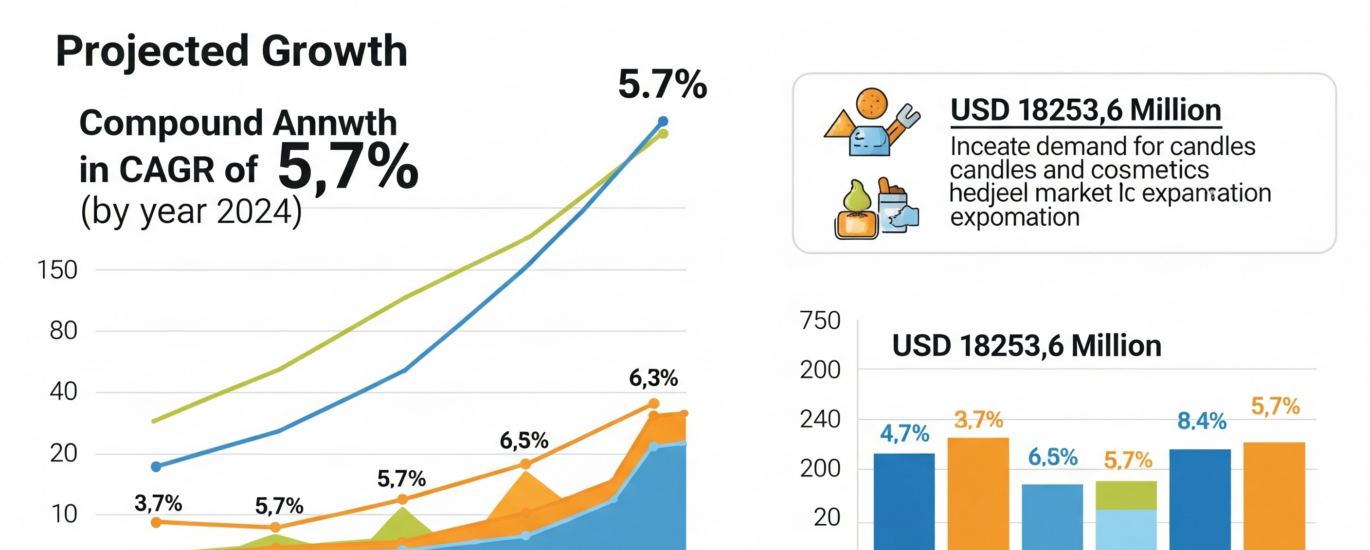Look around your home. That glistening candle, that glossy chocolate bar wrapper, those moisture-resistant cosmetics — chances are, they owe their finish to paraffin wax. For over a century, this petroleum-derived byproduct has been the silent enabler of aesthetics, convenience, and mass consumerism.
But now, the paraffin wax market is staring down a challenge that no polish can buff away: relevance in a decarbonizing world.
According to Future Market Insights, the global paraffin wax market is set to reach USD 9.9 billion by 2033, rising from USD 6.5 billion in 2023. That’s a compound annual growth rate of 4.3% — respectable by industrial standards.
Yet this growth masks a deeper identity crisis.
Waxing Nostalgic While the World Moves On
Paraffin wax is, at its core, a refinery leftover — a saturated hydrocarbon solid that was once considered industrial waste until we found ways to use it in everything from candles to packaging to food coatings.
And use it we did. Paraffin offered a cheap, easy, and inert medium that revolutionized how we preserved, sealed, and beautified goods. Entire industries, particularly in Asia and Latin America, still depend on it today.
But here’s the rub: paraffin wax is fossil-based, non-biodegradable, and almost entirely unrecyclable. Every gram of it is a tiny, glistening footprint of carbon.
The irony? We still associate paraffin with “clean-burning” candles and “protective” coatings. But in reality, it’s a chemical relic of an oil age the world is trying to leave behind.
Request Report Sample: https://www.futuremarketinsights.com/reports/sample/rep-gb-11138
Who’s Still Buying?
The demand today is largely driven by cosmetics, packaging, and candles, with Asia Pacific leading the charge in both production and consumption. China, in particular, has become a global hub for paraffin wax export, with refined grades tailored for pharmaceuticals, fruit coatings, and insulation materials.
Europe and North America, meanwhile, are showing signs of market fatigue. Environmental regulation is tightening, and consumers are turning toward plant-based or soy alternatives, especially in the high-margin candle and beauty segments.
Still, paraffin wax holds its ground — not because it’s green, but because no one’s figured out how to fully replace it at scale.
The Green Wall Is Closing In
Make no mistake: paraffin wax is on borrowed time.
As ESG pressure mounts, major FMCG brands are being forced to reevaluate their supply chains. Wax-coated wrappers that don’t decompose? Products that emit VOCs when burned? These aren’t just environmental sins — they’re future liabilities.
In the packaging world, paraffin’s role is especially under threat. Biopolymers and paper coatings are inching in, driven by the circular economy push. In cosmetics, microplastic bans are being extended to non-degradable wax additives.
Even candles — once the unshakeable bastion of paraffin use — are increasingly made with soy, coconut, or beeswax blends marketed as “natural” and “eco-safe.” The market might still be expanding, but it’s doing so under increasing scrutiny and fractured public perception.
Industry’s Dilemma: Innovate or Obsolesce
There are no silver bullets here. Paraffin producers face a stark choice: dig in or adapt.
Some are experimenting with blends that reduce fossil dependency, while others are pivoting to supply specialty-grade waxes for high-end use where no alternatives exist — think precision electronics or medical coatings.
But let’s be clear: this is not about sustainability. It’s about survival. Paraffin wax is becoming the coal of the petrochemical space — not yet banned, but increasingly unwelcome in polite, progressive company.
The Final Flame?
The paraffin wax market will not collapse overnight. It is too entrenched, too useful, and too cheap. But its days as the invisible hand behind everyday luxuries are numbered unless it undergoes a green reinvention.
Sustainability is no longer a branding exercise — it’s an existential prerequisite. In a world pivoting toward zero-waste and zero-carbon, a product made from refinery scrap must do better than shine.
It must transform — or eventually be extinguished.
Browse the Complete Report: https://www.futuremarketinsights.com/reports/paraffin-wax-market





